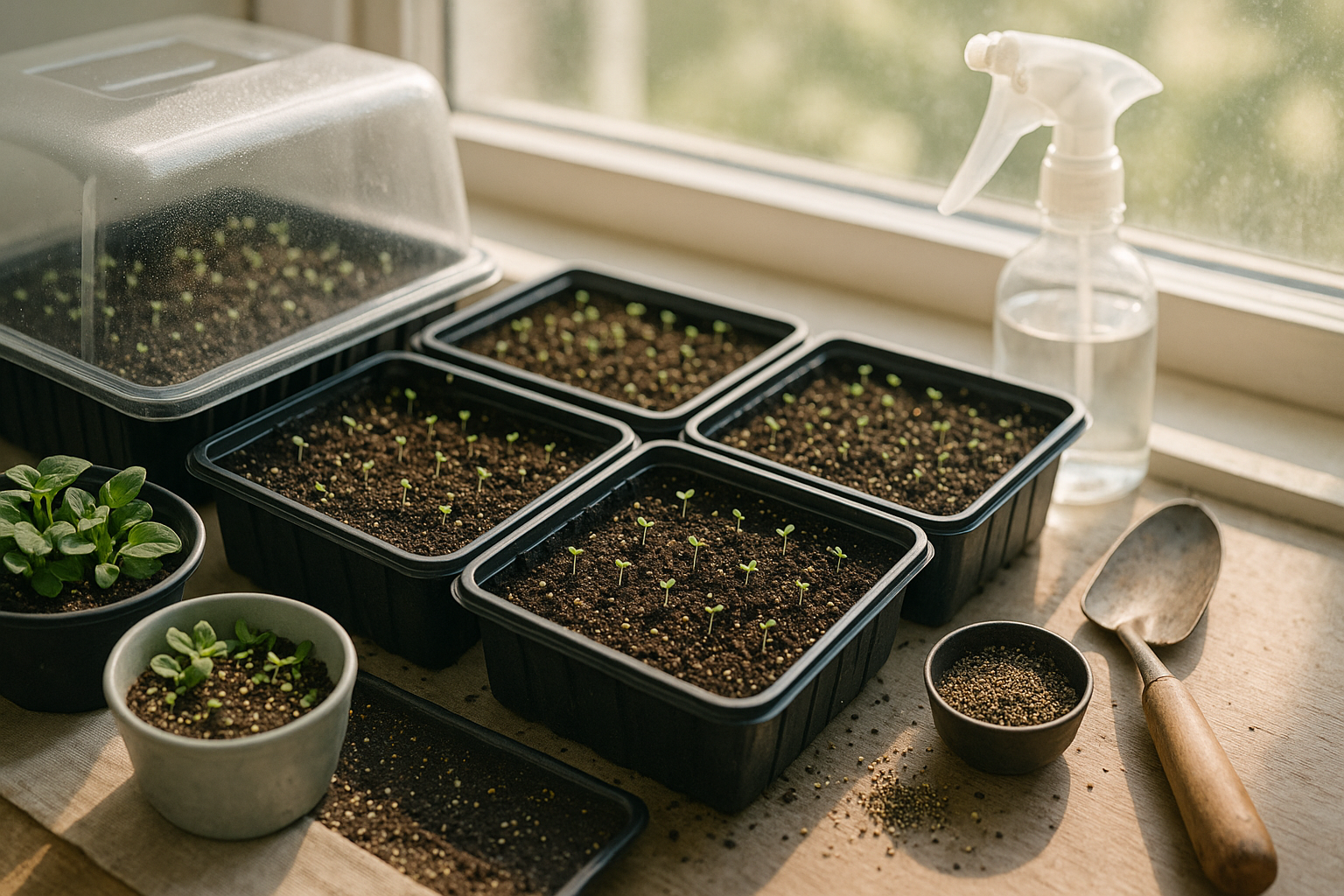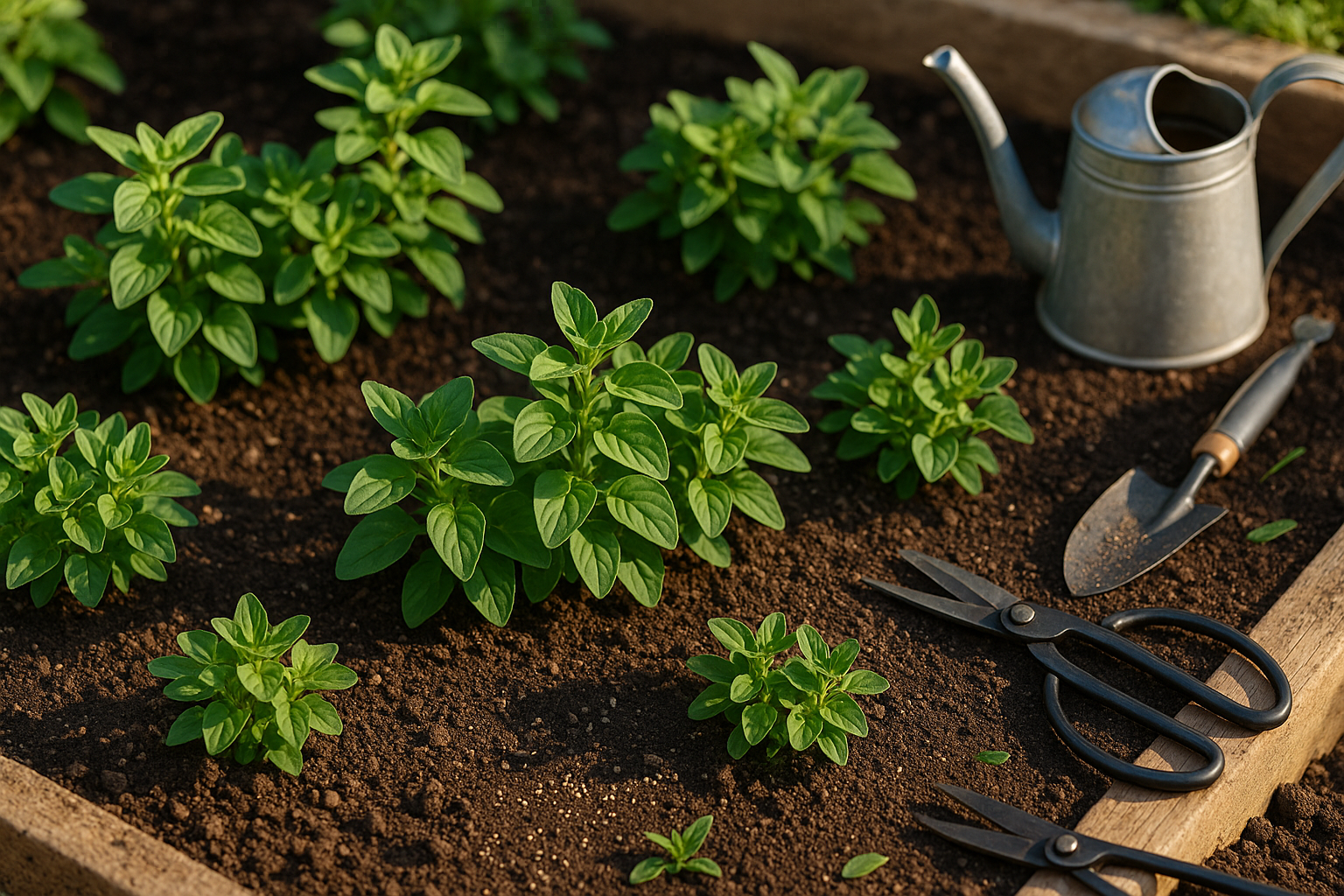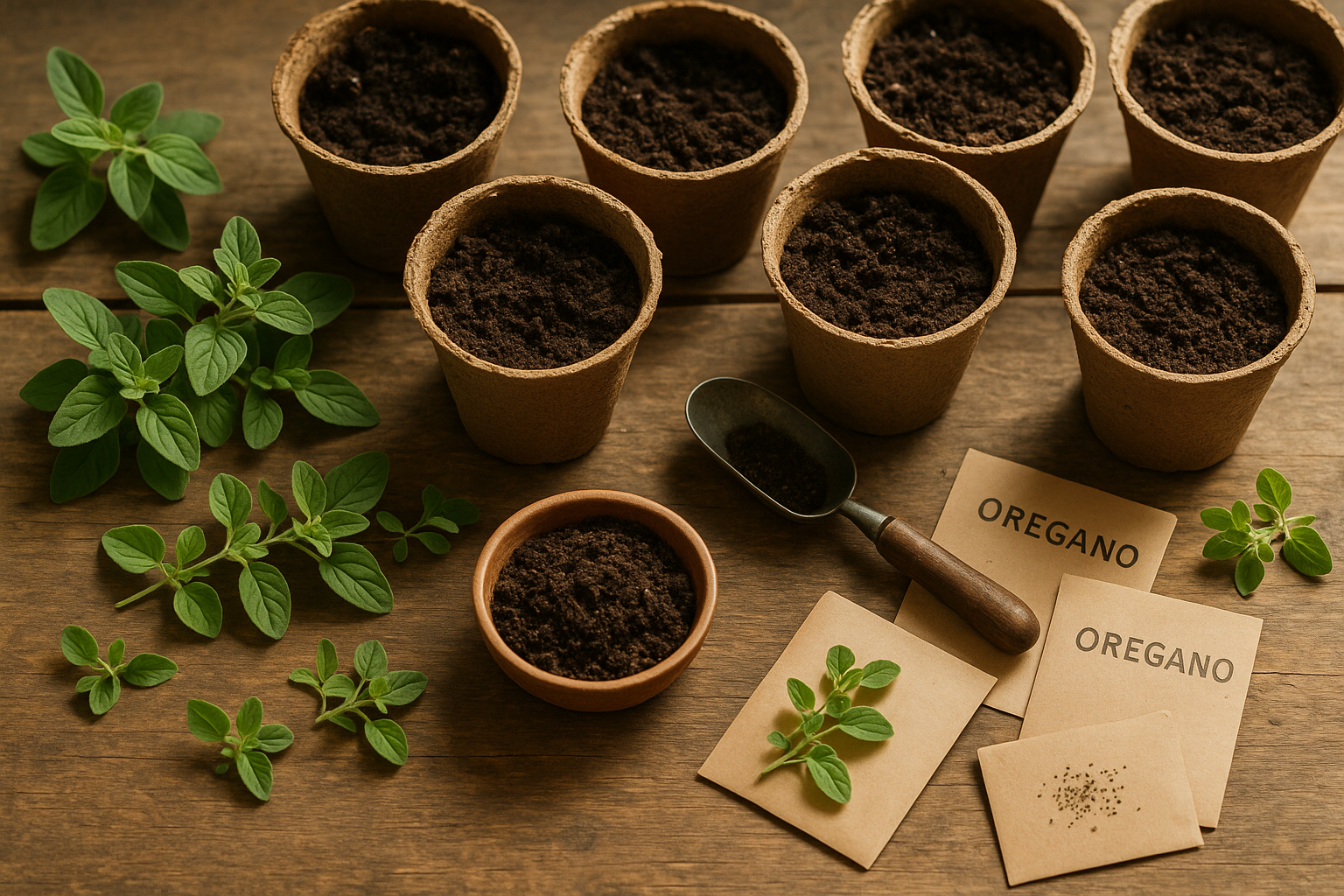Can You Grow Oregano from Seed? (Step-by-Step Guide)
Oregano is a beloved herb found in kitchens worldwide, prized for its bold flavor in Italian, Greek, and Mexican dishes, as well as its medicinal properties like supporting digestion and immunity. If you’re wondering whether you can grow oregano from seed, the answer is yes—it’s both possible and practical for most home gardeners.
While oregano seeds are tiny and germinate slowly, the process is straightforward. Starting oregano from seed gives you a wider choice of varieties, such as Greek or Italian, and is more cost-effective than buying established nursery plants—especially if you want lots of plants for your garden or to share with friends. Growing from seed also lets you control the growing conditions from the very beginning, ensuring your plants are robust and pesticide-free.
For busy gardeners, sow a few extra seeds in peat pots or trays indoors about 6-8 weeks before the last frost. Keep the soil moist and warm for the best results. Once seedlings have a couple of sets of true leaves, you can transplant them outdoors. With patience and a little care, you’ll enjoy a steady harvest of fresh oregano straight from your own garden.
Selecting and Sowing Oregano Seeds

When selecting oregano seeds, start by considering the main types: Greek oregano (Origanum vulgare hirtum), prized for its strong, classic flavor, and Italian oregano (a milder hybrid), both commonly found in seed catalogs. Choose a variety suited to your taste and climate—Greek oregano is hardy and popular for Mediterranean-style cooking, while Italian varieties grow well in a broader range of conditions.
Always buy seeds from a reputable source, such as well-known gardening stores or certified organic suppliers; this ensures high germination rates and disease-free plants.
To sow oregano, you can start seeds indoors 6–10 weeks before your last frost date or outdoors once the soil warms above 65°F (18°C). Indoors, use shallow containers with drainage holes, filled with a light, sterile seed-starting mix. Sprinkle seeds gently on the surface—they need light to germinate, so don’t bury them deeply. Just press them in lightly and mist the surface to keep it moist.
Use a humidity dome or cover with plastic wrap to retain warmth and moisture, and keep containers in a bright spot; a sunny windowsill or grow light works best. Outdoors, sow seeds in a prepared, weed-free garden bed and keep the soil moist until seedlings appear.
Oregano seeds typically take 7–14 days to germinate, with early seedlings emerging as tiny green sprouts with small, delicate leaves. Thin out weaker seedlings to leave the strongest to grow. Be patient—as oregano grows slowly at first but quickly rewards you with lush, fragrant foliage, perfect for fresh or dried use in your kitchen.
Optimal Conditions for Oregano Seedlings
Oregano seedlings thrive best when given plenty of sunlight, well-drained soil, and consistent warmth. Aim for a location that gets at least six hours of direct sun each day—south-facing windowsills or sheltered spots in the garden work well.
Temperature is key: oregano seeds germinate most readily in soil temperatures between 65°F and 75°F, so wait until the danger of frost has passed before sowing outside, or use a heat mat for indoor starts. The soil should be light, airy, and drain quickly. Incorporate coarse sand or perlite into potting mixes, and avoid heavy clay soils that retain water.
Once seedlings have several pairs of true leaves and stand about two inches tall, thin them out by carefully snipping weaker seedlings at the soil line, leaving the strongest one every 6 to 10 inches. This spacing gives roots room to spread as the plants mature.
If you started seedlings indoors, transplant them gently outside when temperatures are steady and they have at least four true leaves—harden them off first by gradually exposing them to outdoor conditions over a week.
In early growth, overwatering is a common pitfall; roots are easily damaged by soggy soil, leading to wilting or fungal diseases like damping off. Let the top inch of soil dry out between waterings, and never leave seed trays standing in water.
Another challenge is insufficient light—seedlings may grow long and spindly if sunlight is weak or indirect. If growing indoors, supplement with LED grow lights placed a few inches above the seedlings for 12–14 hours per day.
By monitoring these conditions and responding early to problems, you’ll set your oregano seedlings up for vigorous growth and healthy harvests.
Caring for Oregano Plants

Caring for oregano plants is simple when you follow a few tried-and-true practices. Start with watering: oregano prefers drier conditions, so allow the soil to dry out completely between waterings. Overwatering is a common mistake—water lightly once the top inch of soil feels dry, and make sure your pot or garden soil drains well.
For feeding, oregano isn’t a heavy feeder; too much fertilizer can actually reduce its signature flavor. Use a balanced, all-purpose fertilizer at half strength once in early spring as new growth begins, then avoid further feeding for the rest of the season.
Good soil management is key—plant oregano in sandy or loamy soil with a neutral to slightly alkaline pH. If you’re growing in containers, use a quality potting mix with perlite for proper airflow.
Pruning is essential for keeping oregano productive and healthy. Start by pinching back growing tips when plants reach about four inches tall. Regularly snip off flower buds as they appear to prevent the plant from bolting and losing flavor; this also encourages bushier growth.
For a fuller plant, trim back long stems by about one-third every few weeks during the growing season, using sharp scissors or pruners. To maintain vigor as oregano matures, thin out overcrowded stems to improve air circulation and minimize disease risk. Remove any yellowing or dead foliage promptly.
As a rule of thumb, harvest no more than one-third of the plant at one time, which helps plants recover quickly. Rotate where you grow oregano each year to prevent soil-borne pests and disease buildup. Regular care using these strategies will keep your oregano thriving and ready for picking whenever you need a fresh burst of flavor in your kitchen.
Harvesting and Using Fresh Oregano
You’ll know oregano is ready for harvest once the stems reach 4–6 inches tall and the plant has a lush, leafy appearance. The ideal time to harvest is just before or at the start of flowering, as the flavor is most intense then.
To pick oregano without harming the plant, use clean scissors or your fingers to snip sprigs just above a set of leaves or a lateral node. This encourages bushier growth and ensures the plant continues producing. Always avoid removing more than one-third of the plant at a time so it can keep thriving.
Fresh oregano leaves have a bold, aromatic flavor that really shines in homemade pizza sauce, marinades, salad dressings, and roasted vegetables. Simply chop and sprinkle the leaves onto dishes just before serving.
For a comforting tea, steep a few leaves in hot water to help soothe sore throats or aid digestion—a trick many herbalists recommend.
If you want to preserve your harvest, tie small bundles of stems together and hang them upside down in a cool, dry spot until the leaves are crumbly. Then strip the leaves into airtight containers, keeping them away from direct sunlight. Properly dried, oregano maintains its punchy taste for months, making it easy to enjoy homegrown flavor long after the season’s end.
Troubleshooting Common Oregano Growing Problems
Oregano is a hardy herb, but even experienced gardeners occasionally run into trouble. One common challenge is poor germination—if your seeds aren’t sprouting, try using fresh, high-quality seeds and make sure the soil stays warm and lightly moist (not soggy).
Leggy growth, often caused by low light, can be fixed by moving your plants to a sunnier spot or using a grow light indoors. Regular pinching and harvesting also encourage bushier growth.
Pests like aphids and spider mites may appear, especially indoors. You can deter them by spraying leaves with a mild soap solution or introducing gentle predators like ladybugs.
For fungal diseases such as powdery mildew, water your oregano at the base in the morning to keep leaves dry, and boost air circulation by giving each plant enough space.
If disease or pests persist and the plants are struggling, don’t hesitate to remove affected growth or even start over with fresh, disease-free seedlings. Sometimes this saves more time and stress in the long run.
Always choose organic or natural remedies first to protect both your plants and any pollinators. Proactively mulch with straw or organic matter to maintain steady soil moisture, and rotate where you grow oregano each year to avoid the buildup of pests and diseases.
With a little observation and proactive care, you’ll keep your oregano plants healthy and thriving all season.
Conclusion & Encouragement for Beginners
Growing oregano from seed is a truly rewarding experience, especially for beginner gardeners. Not only do you get the satisfaction of nurturing a plant from its humble beginnings, but you also gain a fresh and fragrant addition to your kitchen that’s easily within reach.
Watching tiny seeds sprout and flourish teaches patience and builds confidence, making each step—no matter how small—feel like an accomplishment. Plus, oregano is a forgiving herb that thrives with minimal care, making it ideal for those just starting out.
Don’t be afraid to experiment along the way; try planting in different soils, adjusting sunlight, or starting a few pots indoors and outside to see what works best. Remember, gardening is about learning—mistakes are part of the journey.
For extra guidance, tap into resources like your local extension office, gardening blogs, YouTube tutorials, or online forums such as r/gardening on Reddit or Facebook gardening groups. These communities are filled with experienced growers eager to share advice, troubleshoot problems, and celebrate each other’s progress.
Dive in with curiosity, ask questions often, and enjoy the process. Every small success in your oregano garden is proof that with a little care and curiosity, anyone can grow something beautiful and useful.
